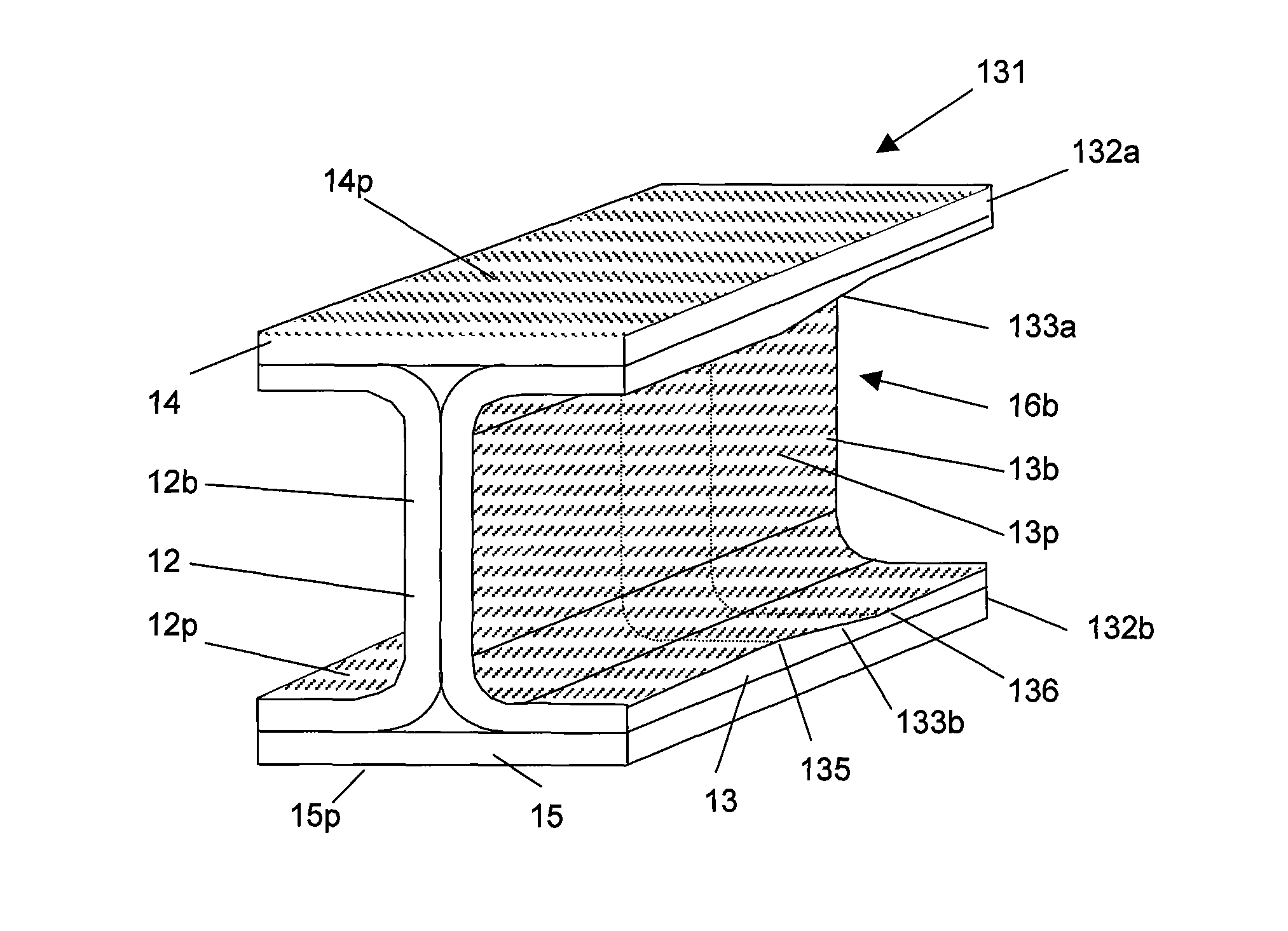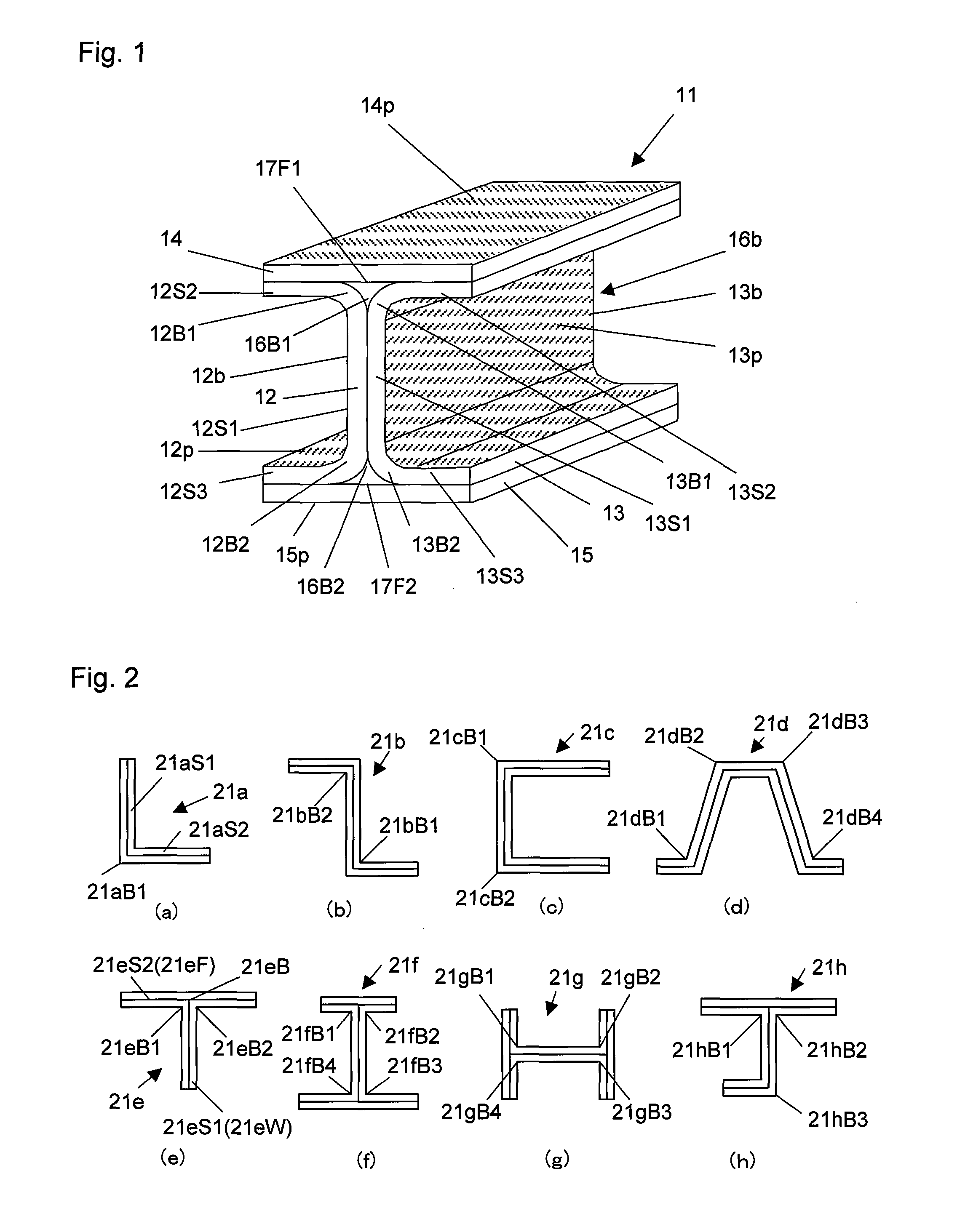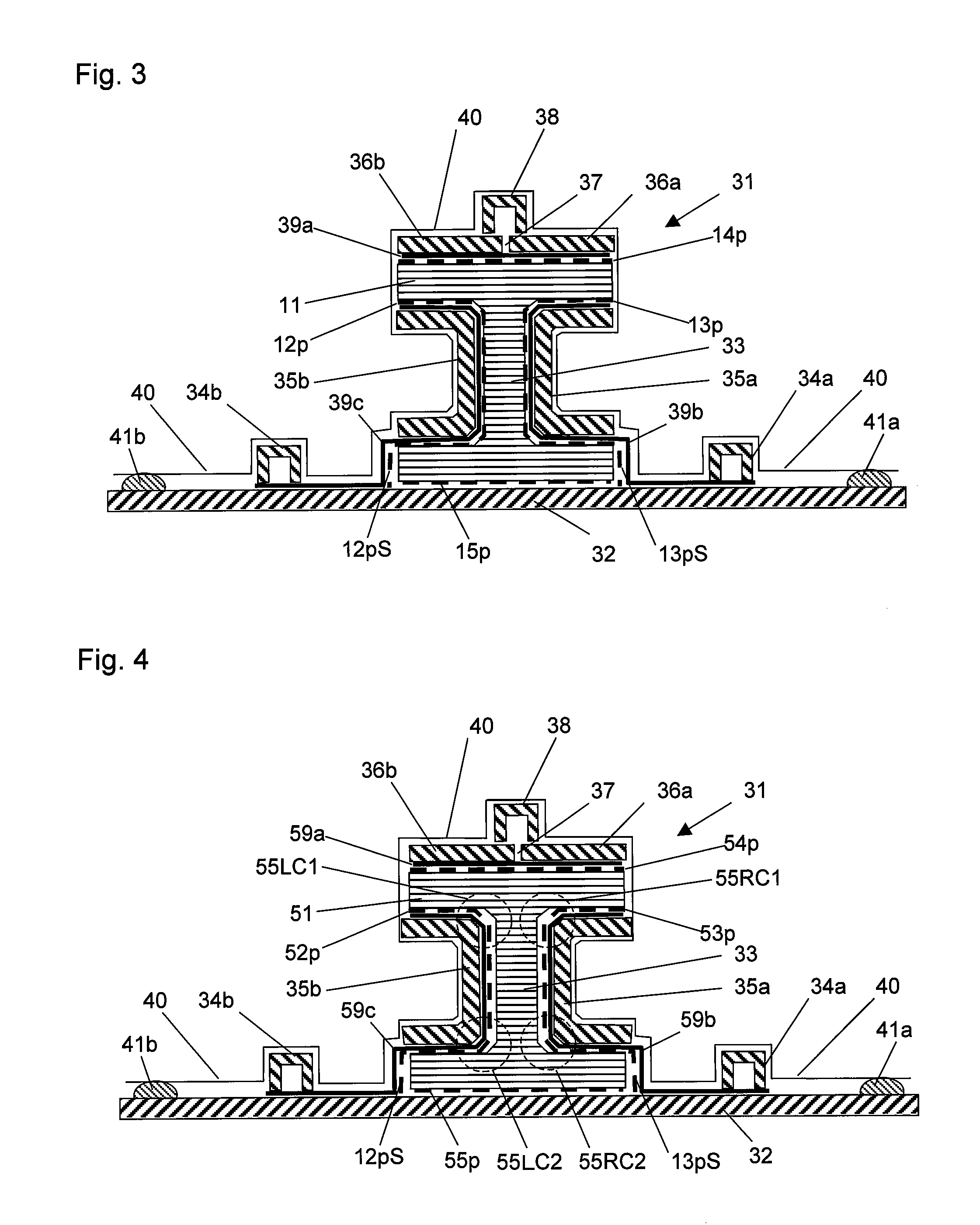Preform for molding fiber-reinforced resin beam
a technology of fiber reinforced resin and resin beam, which is applied in the direction of synthetic resin layered products, transportation and packaging, other domestic articles, etc., can solve the problems of high production cost of molded objects, difficult to molded three-dimensionally shaped objects, and high materials cost, so as to reduce the work of individually arranging release sheets in molds and achieve good quality
- Summary
- Abstract
- Description
- Claims
- Application Information
AI Technical Summary
Benefits of technology
Problems solved by technology
Method used
Image
Examples
example 1
[0429]
[0430]A unidirectional non-crimp carbon fiber woven fabric having a unit weight of carbon fiber of 190 g / cm2 was prepared by using, as a reinforcing fiber yarn, a carbon fiber yarn having a number of filaments of 24,000, a width of 5.4 mm, a tensile strength of 5.8 GPa and a tensile modulus of 290 GPa as warp, a covering yarn in which 22.5 dtex glass fiber yarn deposited with a coupling agent and covered with 17 dtex nylon 66 filament yarn which is subjected to a scouring as auxiliary yarn of the warp, and 17 dtex nylon 66 filament yarn which is subjected to scouring as weft.
[0431]As an adhesive resin, a particle comprising thermoplastic resin having an average particle diameter of 120 μm and a glass transition temperature of 70° C. was prepared. This adhesive resin was uniformly scattered to both surface of the above-mentioned unidirectional non-crimp carbon fiber woven fabric. The amount scattered of the adhesive resin was made to 13 g / m2 per one surface. The carbon fiber wo...
example 2
[0436]
[0437]2 release sheets of width 100 mm and length 5,000 mm and 2 release sheets of width 150 mm and length 5,000 mm were prepared by cutting a release sheet made of polyester woven fabric of weight 85 g / m2 and thickness 0.14 mm (Peel Ply 60001 produced by Richmond Aircraft Products, Inc.).
[0438]One of the 2 sheets of the carbon fiber base material of width 100 mm prepared in Example 1 was used as the reinforcing fiber base sheet 142Af shown in FIG. 12, and the other sheet was used as the reinforcing fiber base sheet 142Df. And, one sheet of the carbon fiber base materials of width 150 mm prepared in Example 1 was used as the reinforcing fiber base sheet 142Bf shown in FIG. 12, and the other sheet was used as the reinforcing fiber base sheet 142Cf.
[0439]One of the 2 sheets of the release sheet of width 100 mm prepared was used as the release sheet 142Ap shown in FIG. 12, and the other sheet was used as the release sheet 142Dp. And, one of the 2 sheets of the release sheet of wi...
example 3
[0456]A fiber-reinforced resin beam was produced from the preform for molding a fiber-reinforced resin beam prepared in Example 2, by using the same molding apparatus shown in FIG. 3.
[0457]In this production, after a matrix resin was injected and impregnated to the preform, it was heated at heating temperature of 130° C. for heating time of 2 hours, to precure the matrix resin. After completing the precure of matrix resin, bagging film and each mold or the like were removed, and demolded. The obtained fiber-reinforced resin beam was heated at a heating temperature of 180° C. for a heating time of 2 hours to carry out postcure of the matrix resin, to complete the molding.
[0458]As a result of inspecting outer surface of the produced fiber-reinforced resin beam, no defect such as a wrinkle or a resin rich was found. By measuring thicknesses of the flange portion and web portion of this fiber-reinforced resin beam in 100 mm interval in the lengthwise direction, the reinforcing fiber vol...
PUM
| Property | Measurement | Unit |
|---|---|---|
| volume fraction Vpf | aaaaa | aaaaa |
| pressure | aaaaa | aaaaa |
| volume fraction Vf | aaaaa | aaaaa |
Abstract
Description
Claims
Application Information
 Login to View More
Login to View More - R&D
- Intellectual Property
- Life Sciences
- Materials
- Tech Scout
- Unparalleled Data Quality
- Higher Quality Content
- 60% Fewer Hallucinations
Browse by: Latest US Patents, China's latest patents, Technical Efficacy Thesaurus, Application Domain, Technology Topic, Popular Technical Reports.
© 2025 PatSnap. All rights reserved.Legal|Privacy policy|Modern Slavery Act Transparency Statement|Sitemap|About US| Contact US: help@patsnap.com



